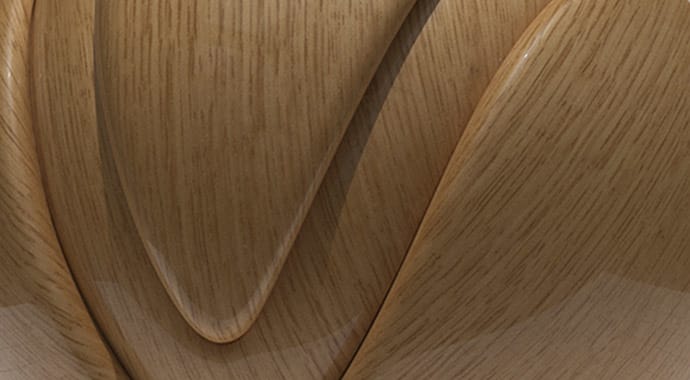Great variety.
Render a wide selection of physical materials including car paint, plastic, leather, fabric, foil and more. Plus, we’ve teamed up with some of the finest real world producers, so you can present your clients with the actual material you’ll be using before building your design.
